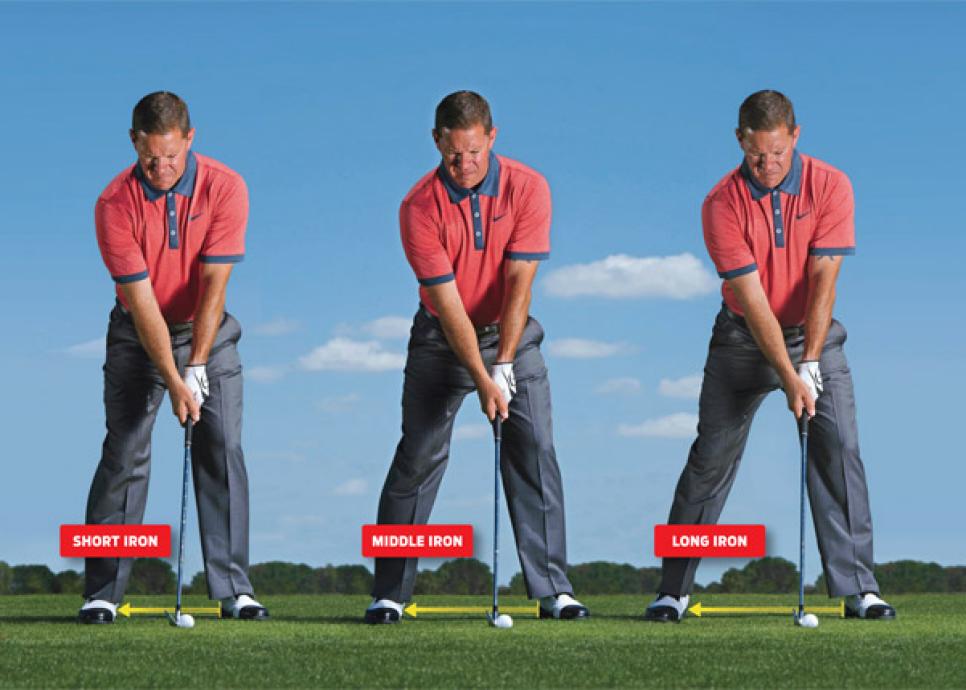Approach Shots
The Key to Golf Ball Position is Keeping it Constant

You might have been told that your golf ball position should change depending on the club you're using. For shorter irons, many people contend that the ball should be played in the middle of the stance, but hitting longer clubs requires the ball position to be more forward. Their reasoning: Shafts vary in length, so you need to adjust because each club will bottom out in a different place.
The problem with changing your ball position for every club is that it becomes guesswork as to where the ball should be played to hit it solidly and a reliable distance. For example, you might hit your 9-iron 130 yards on one swing, but then hit it 140 on the next because your ball position changed a little.
A far more reliable way to ensure you control your distance is to play the ball in the same spot -- no matter what club you're using. To tailor your address position to match the club's length, all you have to do is change the width of your stance (above). The longer the club, the wider the stance. You'll notice that your right shoulder tilts slightly lower than your left as your stance widens.
So where exactly should you play the ball? If you drew an imaginary line from your left shoulder joint, at address, to the ground, this would represent the low point of your swing. Because you want to make ball-first contact and then have the iron bottom out just in front of the ball, you should play it just under your left pectoral muscle. The width of your stance will become second nature once you continue to keep the ball in the same spot.
SEAN FOLEY FILES
I often hear people say you need to sweep a fairway wood off the turf to hit it well. Trust me, if you're trying to get the ball airborne, you want to hit down on the ball. Vertical launch comes from the club's loft at impact and how much backspin is on the ball. It's that second part of the equation many people forget. Say you have a 15-degree 3-wood. If you strike the ball on a slightly downward angle of attack, you're hitting the ball with less loft, but the descending blow imparts more spin, which helps the ball take off on a higher trajectory. So don't be afraid to hit down on woods, slightly.
Sean Foley, a Golf Digest Teaching Professional, works at the Core Golf Junior Academy, near Orlando.